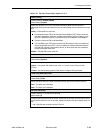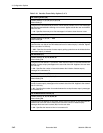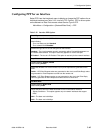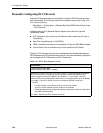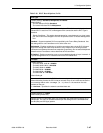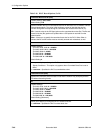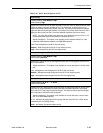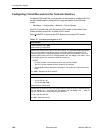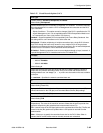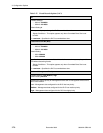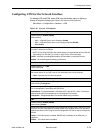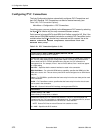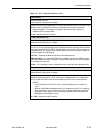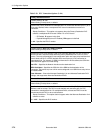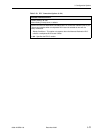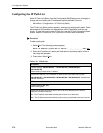
3. Configuration Options
9000-A2-GB31-00 December 2002
3-69
DLCI Type
Possible Settings: Standard, Multiplexed, IP Enabled
Default Setting: Multiplexed
Specifies whether the DLCI is standard, multiplexed, or IP Enabled. This field is read-only
when the selected DLCI is used in a PVC or Management link connection and the DLCI
Type is Standard.
Display Conditions – This option cannot be changed if the DLCI is specified as the TS
Access Management Link. It is not applicable when FRF.8 Encapsulation Mode is set
to Translational (see Table 3-28, Network ATM Options).
Standard – Supports standard DLCIs as specified by the Frame Relay Standards. Use
this setting when a non-FrameSaver unit is at the other end.
Multiplexed – Enables multiplexing of multiple connections into a single DLCI. Allows a
single PVC through the frame relay network to carry multiple DLCIs as long as these
connections are between the same two endpoints (proprietary). Do not select Multiplexed
unless there are FrameSaver units at both ends of the connection.
IP Enabled – Enables connection to one or more endpoints through a Layer 3 network. A
Payload Management PVC is created as well as the IP Enabled DLCI.
CIR (bps)
Possible Settings:
– 9783: 0 – 2320000
– 9788: 0 – 2312000
Default Setting: 0
Determines the data rate in bits per second for the DLCI that the network commits to
accept and carry without discarding frames. Entry of an invalid rate causes the error
message Value Out of Range (0 – x), where x is the maximum line rate available
on the port.
0 – maximum – Specifies the network-committed data rate.
Tc
Possible Settings: 1 – 65535
Default Setting: Read-Only
Displays the DLCI’s calculated value of its committed rate measurement interval (Tc) in
milliseconds based on the CIR (bps) and Committed Burst Size Bc (Bits) settings.
Committed Burst Size Bc (Bits)
Possible Settings: CIR, Other
Default Setting: CIR
Specifies whether the DLCI’s committed burst size uses the CIR setting or is entered
independently. This value is the maximum amount of data that the service provider has
agreed to accept during the committed rate measurement interval (Tc).
CIR – Uses the value in the CIR (bps) option as the committed burst size (Bc). The Bc and
excess burst size (Be) options are updated when a CIR update is received from the
network switch.
Other – Allows you to specify the committed burst size for the DLCI. When Other is
selected, the Bc and Be values must be manually entered and maintained.
Table 3-27. Circuit Records Options (2 of 3)



